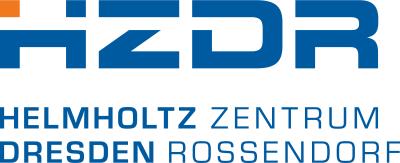- Home
- Users & Science
- Find a beamline
- Collaborating research group beamlines
- BM20 - ROBL - The Rossendorf Beamline
BM20 - ROBL - The Rossendorf Beamline
The Rossendorf Beamline (BM20)
Homepage of the Rossendorf Beamline at HZDR
|
|
|
Synopsis
The Rossendorf Beamline is one of 12 Collaborating Research Group (CRG) beamlines, located at SBM port 20 of the EBS ring of ESRF. It is owned and operated by the Helmholtz-Zentrum Dresden Rossendorf (HZDR, Germany), and is dedicated to actinide sciences and radioactive waste disposal research. The beamline provides four experimental stations in an alpha-lab environment:
- XAFS station with fluorescence and transmission detection for X-ray Absorption Fine-Structure (XAFS) spectroscopy, including (conventional) X-ray Absorption Near-Edge Structure (XANES) and Extended X-ray absorption fine-structure (EXAFS) spectroscopies.
- RIXS station with a 5-crystal Johann-type spectrometer for high-energy-resolution fluorescence-detection X-ray absorption near-edge spectroscopy (HERFD-XANES), X-ray emission spectroscopy (XES) and resonant inelastic X-ray scattering (RIXS) measurements.
- XRD station with two diffractometers: XRD-1 with a heavy-duty, Eulerian cradle, 6-circle goniometer for (high-resolution) powder X-ray diffraction (PXRD), surface-sensitive crystal truncation rod (CTR) and resonant anomalous X-ray reflectivity (RAXR) measurements. XRD-2 with a Pilatus3 x2M detector stage for single crystal X-ray diffraction (SCXRD) and in situ/in-operando PXRD measurements.
Beamline Staff
- XAFS station: Damien Prieur, Andre Rossberg
- RIXS station: Lucia Amidani, Clara E. Silva
- XRD station: Christoph Hennig, Eleanor Lawrence Bright
- Technical Support: Joerg Exner, Nils Baumann,
- Beamline Operation Manager: Sami Juhani Vasala
Scientific Applications
- Our research provides detailed insights into the structural and electronic properties of actinide and lanthanide-containing materials across various scientific disciplines, including physics, chemistry, environmental science, and geoscience. We study fundamental electron interactions, bonding properties, probing the local structures and oxidation states of complex systems. Data analysis is performed with the help of electronic structure calculations.
- Fundamental and applied actinide research allows for better risk assessments of nuclear waste storage; improved remediation strategies for areas contaminated by radionuclides; chemical speciation of radionuclides in soils, sediments, aquifers, mining shafts etc.; investigation of binding mechanisms of radionuclides with natural and anthropogenic organic matter, micro-organisms, clay minerals, rock surfaces; influence of these interactions on radionuclide migration and retardation in the environment.
Equipment Overview
Optics
- Collimating mirror with Pt, Rh and Si surfaces (water-cooled)
- Double-crystal monochromator with three pairs of crystals (Si(111), Si(111)90°, Si(311) mounted on one axis (LN2-cooled)
- Double-multilayer monochromator (water-cooled)
- Horizontally focussing mirror with two toroids with Pt and Rh coating and a flat Si surface
- Slits and beam diagnostics after each optical element
- Useful energy range 2.8-36 keV
XAFS
- Standard equipment to perform XANES (X-ray absorption near edge spectroscopy) and EXAFS (extended X-ray absorption fine-structure spectroscopy)
- 18-element, high-throughput Ge-detector (Mirion) with CMOS-based charge sensitive CUBE amplifiers (XGLab), and Falcon-X read-out spectrometers (XIA) for fluorescence detection of dilute samples
- 7-element Silicon DRIFT detector (SDD) (Mirion) with CUBE amplifiers and Falcon-X spectrometer (XIA)for higher energy resolution
- Closed-cycle He-Cryostat for sample cooling down to 15 K
- Automated sample holders for RT and cryogenic measurements
RIXS
- Johann-type 5-crystal spectrometer with 0.5 and 1 m radius
- Spherically-bent crystal analyzers covering the full energy range up to 20 keV for 1 and 0.5 m radii
- Cryostream
- High temperature furnace with control atmosphere
XRD
- XRD-1 station with a heavy-duty, Eulerian cradle, 6-circle goniometer
- XRD-2 station with a Pilatus3 x2M detector stage
- Cryostream
Expected Data Volume
< 100 Bq
Additional Information
Please visit the website of the Rossendorf Beamline at the Helmholtz-Zentrum Dresden-Rossendorf (HZDR).




